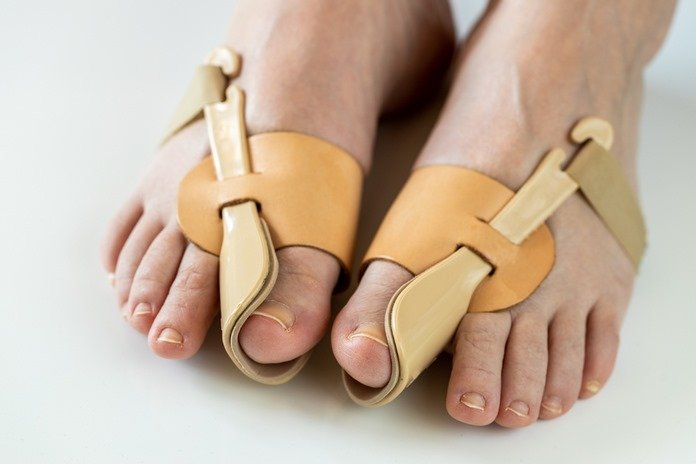Medical Solutions

The treatments for bunions might be varying from symptoms and the size you are having. Conservative treatment always consists of wearing well-fitted and comfortable shoes that have supportive, soft soles and do not consist of high heels. Using or splinting bunion pads might also aid in relieving symptoms. In a few cases, bunion might give rise to severe symptoms that end up needing surgery to eliminate or fix them. (8)
Your healthcare provider might recommend ways to aid with the pain and pressure. These consist of:
- Taking anti-inflammatory drugs and over-the-counter pain medications
- Wearing shoes that provide your feet space
- Adding the support of feet to your shoes
- Adding cushions or pads to act as a buffer between your shoes and bump
- Icing the bunion, significantly when it is disturbing you or you have been on your feet for quite a long time
If such medications do not cure it enough, you may require surgery. Surgery for a bunion may:
- Straighten your toe by eliminating some bone
- Removing inflamed tissue from your toe joint around
- Join bone in some parts of your feet
- Realign each or more bones to cure the abnormal angle
Foot surgery might take some time to properly recover. If you are thinking of having surgery, talk to or visit your healthcare provider regarding what you can expect. Bunions do not vanish right away. Treatment sometimes relies on relieving symptoms and might consist of:
Orthotic devices: Custom-made or over-the-counter shoe inserts (orthotics) might aid to control alignment problems such as pronation that might be involved in the formation of a bunion. You might also put a space between the big and second digit. Some individuals find relief by placing a splint at night to make the big toe straight.
Bunion taping and pads: Over-the-counter bunion pads might cushion that area and relieve the pain. You might also utilize medical tape to keep that incorrect position.
Injections: Steroid injections might lower the swelling and pain but might also be damaging if used too sometimes or injected into the joint by itself. This is sometimes a late treatment of bunions when trying to neglect surgery.
Footwear changes: Changing to shoes having a deep, wide toe box might take the pressure off your toes. You might be able to utilize a stretching device to expand shoes you already own.
Surgery: If nonsurgical treatments do not aid, and walking gets extremely painful, your healthcare giver might suggest surgery. This method is known as a bunionectomy. Your healthcare provider eliminates the bunion and realigns bones to bring the big toe back into the right position.
Physical therapy: Physical, massage therapy, and ultrasound therapy might break up the soft tissue adhesions to lower inflammation and pain. There are some exercises actually that might aid in improving muscle strength around the bunion and might modestly enhance alignment.
Pain reliever: Nonsteroidal anti-inflammatory drugs (NSAIDs) both topical and oral might be combined with ice packs to aid with swelling and pain.
